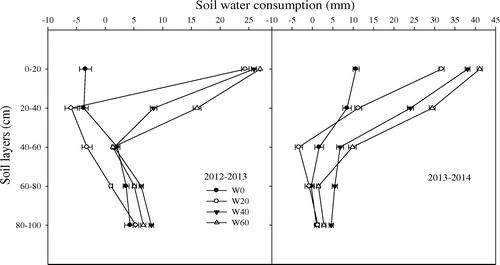Figures & data
Figure 1. The monthly precipitation during 2012–2014, the average value during the previous 15 years (Average 15).
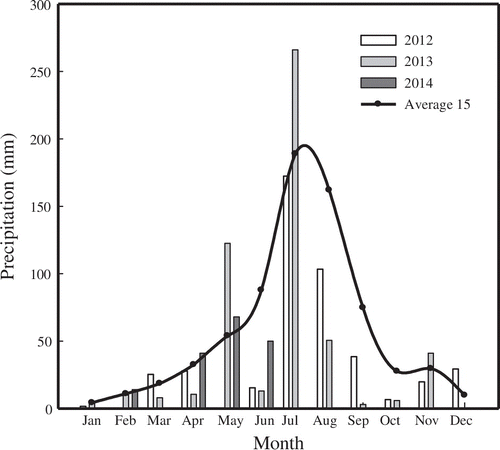
Table 1. Soil bulk density and soil water content of 20 cm layers in the top 0–200-cm soil profile of the experimental field.
Figure 2. The daily precipitation during the 2012–2013 and 2013–2014 winter wheat growing seasons. Precipitations from July to December were not measured in 2014.
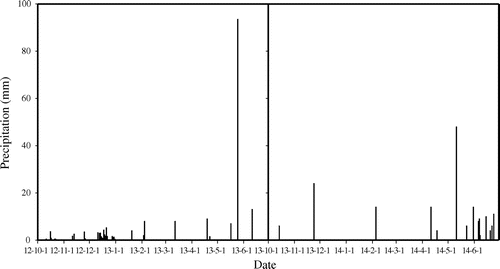
Table 2. The target relative soil water content (θtr) and actual relative soil water content (θa) in the supplemental irrigation treatments (W20, W40 and W60) after jointing and anthesis in 2012–2013 and 2013–2014 growing season, the amount of supplemental irrigation (CIR) is also indicated.
Figure 3. Responses of root weight density in the 0–100-cm soil layers to different treatments at anthesis in the 2012–2013 and 2013–2014 growing seasons, rainfed (W0), the soil water content before SI was monitored to depths of 20 cm (W20), 40 cm (W40) and 60 cm (W60), respectively, and bringing the soil moisture to 65% field capacity (FC) at jointing and 70% FC at anthesis. The same letter in the figure is not significant different at p = 0.05 by LSD test. Vertical bars are standard errors.

Table 3. The mean value of triphenyl tetrazolium chloride (TTC) reduction activity in 0–60-cm soil layers during grain filling of root in 2012–2013 and 2013–2014 growing seasons under different treatments.
Figure 4. Changes in root TTC reduction activities in the 0–60-cm soil layers after anthesis of different treatments in the 2012–2013 and 2013–2014 growing seasons. The same letter in the figure is not significant different at p = 0.05 by LSD test. Vertical bars are standard errors.
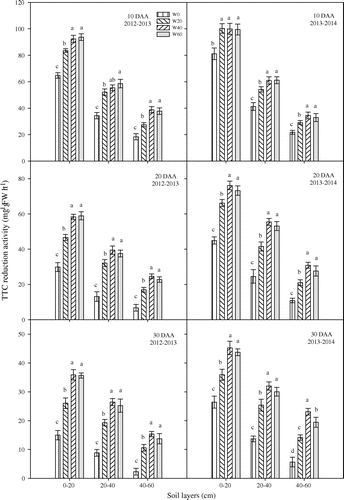
Table 4. The mean values of catalase (CAT) and superoxide dismutase (SOD) activities, soluble protein (SP) concentrations and malondialdehyde (MDA) concentrations of roots in 0–60 cm soil layers during grain filling under different treatments.
Figure 5. Changes in malondialdehyde (MDA) concentration, soluble protein (SP) concentration, and catalase (CAT) and superoxide dismutate (SOD) activities in winter wheat root at different soil layers after anthesis in different treatments in the 2013–2014 growing seasons. The same letter in the figure is not significant different at p = 0.05 by LSD test. Vertical bars are standard errors.
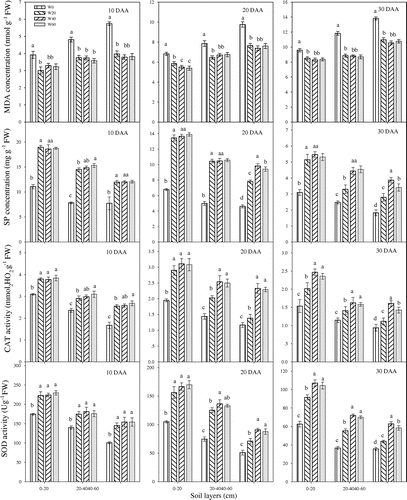
Figure 6. Soil water content (SWC) at anthesis after SI, 20 DAA and maturity in 0–100 cm soil layers for SI treatments in the 2012–2013 and 2013–2014 growing season. The horizontal bars are standard errors.
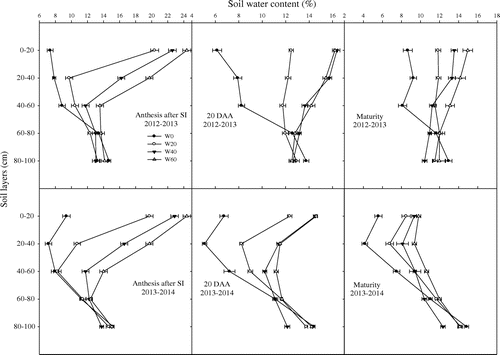
Figure 7. Soil water consumption (SWU) in 0–100-cm soil layers from anthesis after SI to maturity for SI treatments in the 2012–2013 and 2013–2014 growing seasons. The horizontal bars are standard errors.
